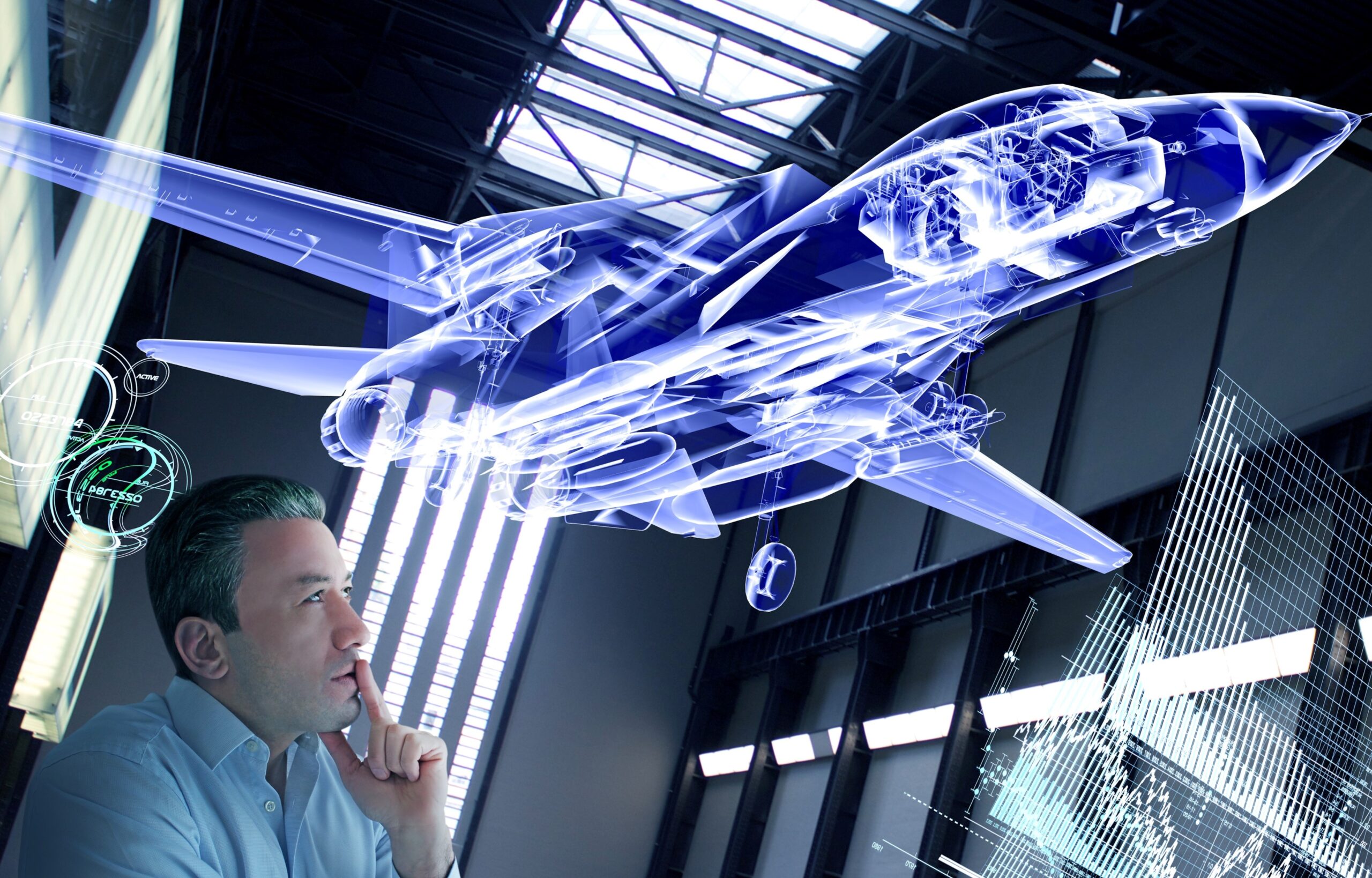Soaring innovation in aerospace and defense

Attaining the feats of the avian and select other species has captured human imagination for millennia. Flight was attributed to gods and not-quite-mortal beings in antiquity and the ideas continued through the Renaissance with augmentations to the human form with mechanics, and well into the modern era with science fiction works on personal flight methods and intergalactic travel. Our enrapturement with flight fueled the Wright Brothers, combined feats of Nasa and other space agencies, and even pioneered a new industry around commercial space flight. But those visions come at a cost, a high degree of complexity is required for each advancement, and this cost is only going to increase as we uncover new concepts and adhere to new requirements. These changes to the aerospace and defense industry will alter more than the aircraft, but entire business models.
Take the electrical vertical takeoff and landing (eVTOL) aircraft being developed today, the smaller footprint would provide an alternate mode of transportation within an environment closer to where people live and in a more environmentally friendly fashion than some other options depending of the energy sources. With the change in aircraft form come a bevy of ancillary changes and requirements – how are the batteries integrated into the design? What infrastructure changes will be needed for charging as well as the new decentralized flight paths? And with a greater number of craft in flight in a smaller area, how will traffic be coordinated effectively? What new business models accompany these changes, is the technology for goods transport or air mobility?
eVTOLs are an exaggerated example of the changes to the industry, but complexity is growing everywhere and predictably so. Former Lockheed Martin CEO Norman Augustine famously suggested that while defense budgets may grow at a linear pace, the cost of new aircraft grows exponentially. It could have been self-serving giving his position, but regardless of intent it has held true. The costs of ever-more complex aircraft are no longer sustainable with the goal purely for innovation. Cost control and development timelines scheduling have become significant hurdles to successful aircraft development programs. Aircraft were never simple systems, but the introduction of greater electronics, software, and electromechanical systems are testing the traditional workflows created for heavily mechanical designs.
Embracing the changes around the industry is the only way to stay relevant. That might be to comply with governmental or regulatory requirements on safety, or by from the competition brought by start-ups and newcomers in space, air mobility, and even defense. These new requirements often directly impact the other system requirement of a new aircraft which requires a thoughtful rebalancing of requirements to find the best solution. But rarely is the optimal solution easy to obtain in the complex and increasingly smart products.
Sustainability is likely the most recent addition to the industry drivers, at least in its direct application. Emerging from regulatory action and the will of the market creating more environmentally friendly aircraft is the new requirement to balance with cost, safety, and manufacturing complexity. Historically more sustainable innovations came out of financial incentives – using less fuel means lowered operating cost. But ESG investments and regulation are making these changes mandatory. The industry is making combustion engines more efficient in the short term and investing in new propulsion technologies fo the future. But all of these advancements comes with their own complexities. Many engine designs have had many years to optimize fuel efficiency and there are diminishing returns. Electric propulsion has yet to find a viable storage technology because of the weight penalty of batteries. And each of the alternative fuel initiatives comes with its on problems including cryogenic storage for hydrogen or fuel cost for bio and synthetic fuels.
Capturing the value in these complex problems can longer be done with yesterday’s modeling tools in any reasonable timescale. Companies need to digitalize and adopt the next generation of model-based systems engineering. Companies must forgo the documents in favor of comprehensive models. But to understand either why in greater detail or begin answering the question of how – MBSE for Dummies is a great place to start. It walks through the challenges facing the aerospace and defense industry today but provides valuable insight to other industries creating increasingly smart product like autonomous vehicles or even next generation personal electronics.
Siemens Digital Industries Software is driving transformation to enable a digital enterprise where engineering, manufacturing and electronics design meet tomorrow. Xcelerator, the comprehensive and integrated portfolio of software and services from Siemens Digital Industries Software, helps companies of all sizes create and leverage a comprehensive digital twin that provides organizations with new insights, opportunities and levels of automation to drive innovation.
For more information on Siemens Digital Industries Software products and services, visit siemens.com/software or follow us on LinkedIn, Twitter, Facebook and Instagram.
Siemens Digital Industries Software – Where today meets tomorrow


